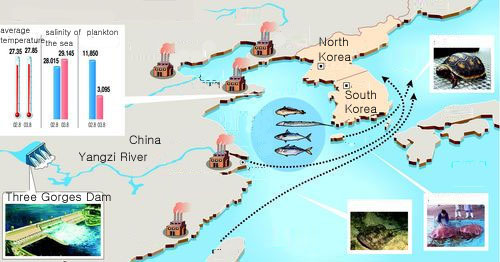Over viewing the vast amount of potential
negative impacts made by the TGP, an alternative strategy can be planned out.
One main alternative, especially for hydroelectric power is to build dams along
two different river systems, the Jinsha Jiang and the Yalong Jiang. Experts
argue that these two river systems would be a more suitable compared to the
Yangtze River (Fang et al., 1988). The Jinsha Jiang, which takes up more than a
half of the total drop of the Yangtze River, can have an echelon of eight dams
in series. These dams will have a total capacity of 50,000 megawatts, which is
four times the capacity of the 150-meter scheme. There will be an active volume
of 65 levels of formation of four or five dams, which can be built at the
Yalong Jiang. Each with a similar capacity as TGP and the volumes are more
active for flood control.
These alternatives were proposed for the following advantages. Since the rich "mines" of waterpower are mostly located in the southwestern areas of China, a power plant there will be more efficient than the TGP. With similar capacity and costs, the dams in the upper reaches will have a more active volume, are therefore will be more useful in flow regulation and flood control. This way, better quality of power can be provided. Another advantage is that the alternative projects contains a series of smaller dams, whose construction is technically much less challenging compared to the megadam of the TGP. Since these dams can be built at a same time, the alternative projects will take about 10 years in comparison to the 20-year TGP. In addition, the series of dams will generate more electricity by the time TGP is finished. The alternative dams will also cost much less than the TGP if the investment interest is taken into account. Since the alternative projects are located in a less populated upper reach area, there will be less inundation loss and resettlements. Other than the relocation being dispersed in several provinces, this will make the task much easier to accomplish. The goals in maintaining the social sustainability will be easier to accomplish. The social effects of relocation by the "alternative dams" will be less exhausting. Finally, The alternative projects will create less environmental effects compared to the TGP.
Reference:
Jackson, Sukhan. "Resettlement for China's Three Gorges Dam: Socio-economic Impact and Institutional Tensions."








%5B%7B%5DBWQ(L.jpg)

P(~TEGP.jpg)

















